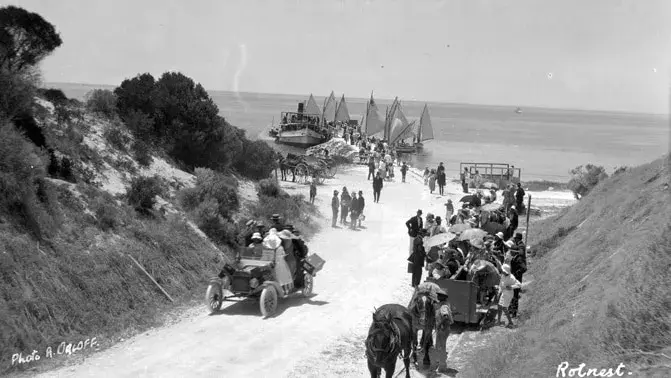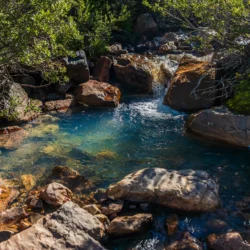Rottnest Island is a must-visit spot if you’re heading to Western Australia. Accessible by ferry from the mainland, Rottnest is a stunning oasis of white sandy beaches, stunning reef, eye-catching wildlife, and idyllic cycling routes.
As a long-time WA local and lover of travel and exploration, I’ve been to many beautiful places. But few come close to the tranquility and uniqueness offered by this small island 18 km off the coast of Perth.
Keep reading for all the information you need when planning a trip to Rottnest, including ferries, on-island transport, wildlife, accommodation, and all the best things to do.
How to get there?
To get to Rottnest, it’s pretty simple. Book one of the fast-boat ferries that take off multiple times per day from either Fremantle B Shed or Central Perth. Sealink and Rottnest Express are the two companies operating this service. You can choose to bring your own bike by paying a little extra – the ferry crew will help you load it onto the boat. Choose a return ferry ticket for a one day adventure, or book accommodation and stay a little longer. There is a small island admission fee required upon booking.
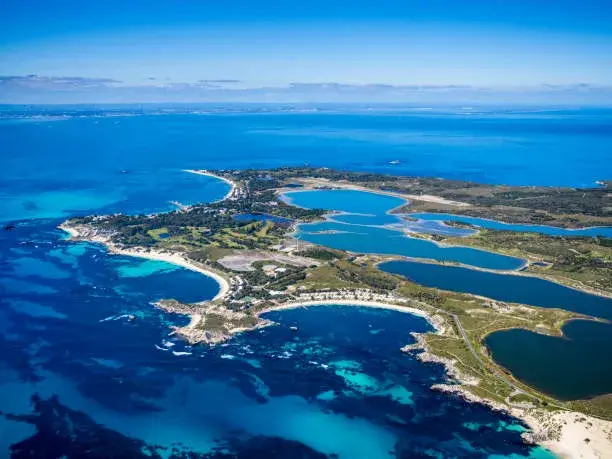
How to get around?
On Rottnest, there are no cars! Except for the ones needed to maintain the island. So, as a visitor you have limited choices for getting around the island. You can choose to either catch a bus or go full ‘Rotto style’ and hire a bike.
Bikes can be hired from Paddle and Flipper on the island if you choose not to bring your own bike. This hire store is within walking distance of the ferry drop-off point. Pre-book your bike with your ferry ticket to avoid disappointment.
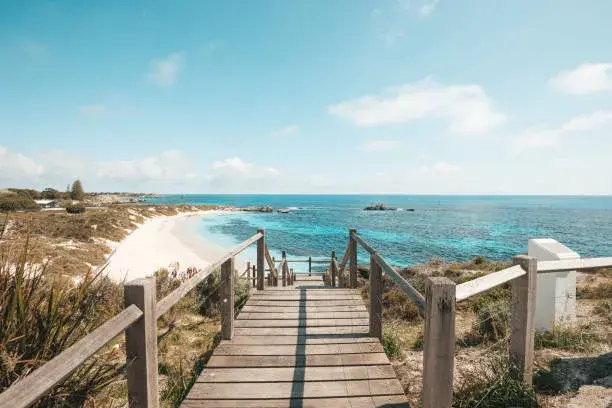
Quokka Coaches (bus) are also available for visitors to take advantage of extra comfort and convenience, and see the island in less time. You can choose to ride the full island loop, or explore at your own pace by jumping out whenever something catches your eye.
What makes Rottnest unique?
Rottnest is a wonderful and wild island with a limited number of buildings and vehicles. Apart from the hotels, shops and museum near the jetty where the ferries arrive, there is pretty much nothing else except nature and wilderness once you start cycling or touring the island.
Not to mention the Quokkas – beautifully cute animals that carry their babies in their pouch like kangaroos. These furry creatures are more than used to people on the island and are very friendly. Take a photo with one and try and catch its iconic smile – but be careful not to feed or touch them while doing so.
Fun fact – Rottnest Island actually got its name from early Dutch explorers who, upon arriving, mistook the native quokkas for large rats. They called the island “rattennest,” meaning ‘rat’s nest’. Over time, the name has been shortened to ‘Rottnest’ which is the island destination we know and love today.
What are the best things to do on Rottnest Island?
When it comes to Rottnest island, there’s a reason people come back again, and again. Whether you’re interested in the beaches, trails, the food and drink scene, or the history of the Island – there’s something for everyone to do. If you want to have a few drinks and stay longer, there are also a few hotels on the island available for booking.
Here’s our list of our favourite things to do while on this wonderfully wild piece of land 18 km off the coast of Perth.
- Meet the quokkas
- Explore the beaches
- Bike around the island
- Fish off the jetty
- Visit Wadjemup lighthouse
- Take a bus or guided tour
- Hike the trails
- Discover Rottnest military history
- Taste local food and drinks
- Stay the Night
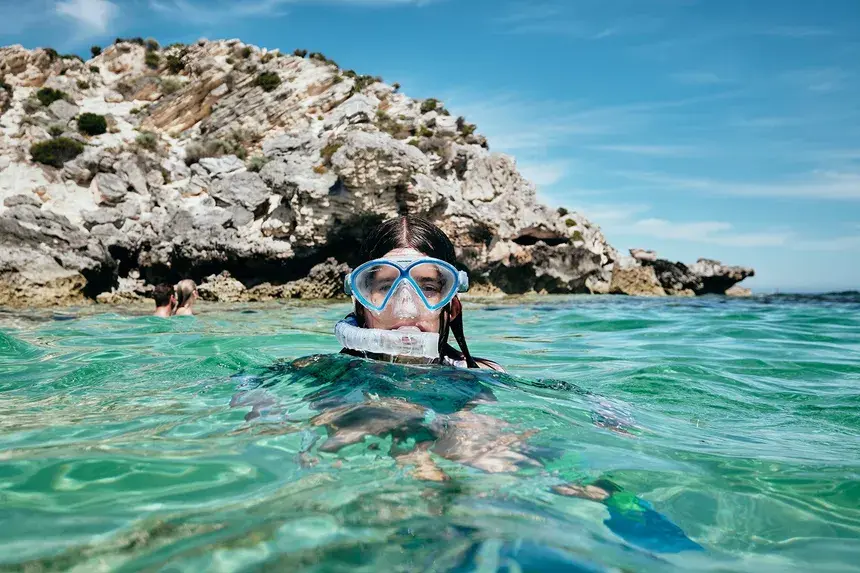
Rottnest History
Dating back thousands of years, Rottnest Island has a rich history worth learning about. Known as Wadjemup, Rottnest was originally home to the Noongar people and held strong cultural significance to the indigenous population.
In 1696, Dutch explorers arrived at the island and mistakenly identified the island’s native quokkas as giant rats and named the island ‘rattennest’ (rat’s nest). This later evolved to ‘Rottnest’.
In the 19th century, Rottnest became a place of imprisonment for Aboriginal people, and later served as a military base during World War II.
Now, the island is a popular holiday destination known for its stunning beaches, unique wildlife, and interesting history and cultural heritage.
